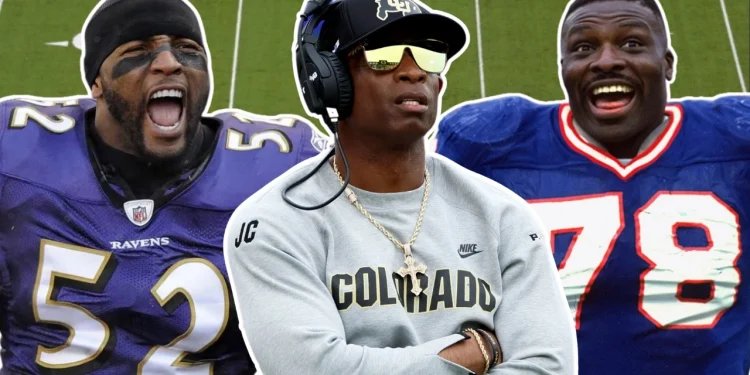In the storied history of the National Football League (NFL), defense has always been a cornerstone of championship teams. Great defensive players can change the course of a game with a single play, making a critical stop or forcing a turnover. While offensive stars often grab the headlines, it’s the defensive stalwarts who provide the backbone for sustained success. This article delves into the careers of the best NFL defensive players of all time, examining their impact, achievements, and enduring legacies.
From fierce pass rushers to lockdown cornerbacks, these players have set the standard for excellence on the defensive side of the ball. Their contributions have not only led to numerous individual accolades but have also been pivotal in their teams’ quests for Super Bowl glory. Join us as we explore the careers of these defensive legends and celebrate their unparalleled contributions to the game of football.
1. Lawrence Taylor
Lawrence Taylor, often referred to simply as “LT,” is widely regarded as the greatest defensive player in NFL history. Drafted by the New York Giants with the second overall pick in the 1981 NFL Draft, Taylor revolutionized the outside linebacker position with his unprecedented blend of speed, power, and instinct.
Over his illustrious 13-year career, Taylor amassed 132.5 sacks, a record for linebackers at the time of his retirement. He was a ten-time Pro Bowl selection and an eight-time First-Team All-Pro. His dominance was such that he became one of only two defensive players to ever win the NFL MVP award, which he did in 1986. That same year, he led the Giants to a Super Bowl victory, anchoring a defense that is still remembered as one of the best in league history.
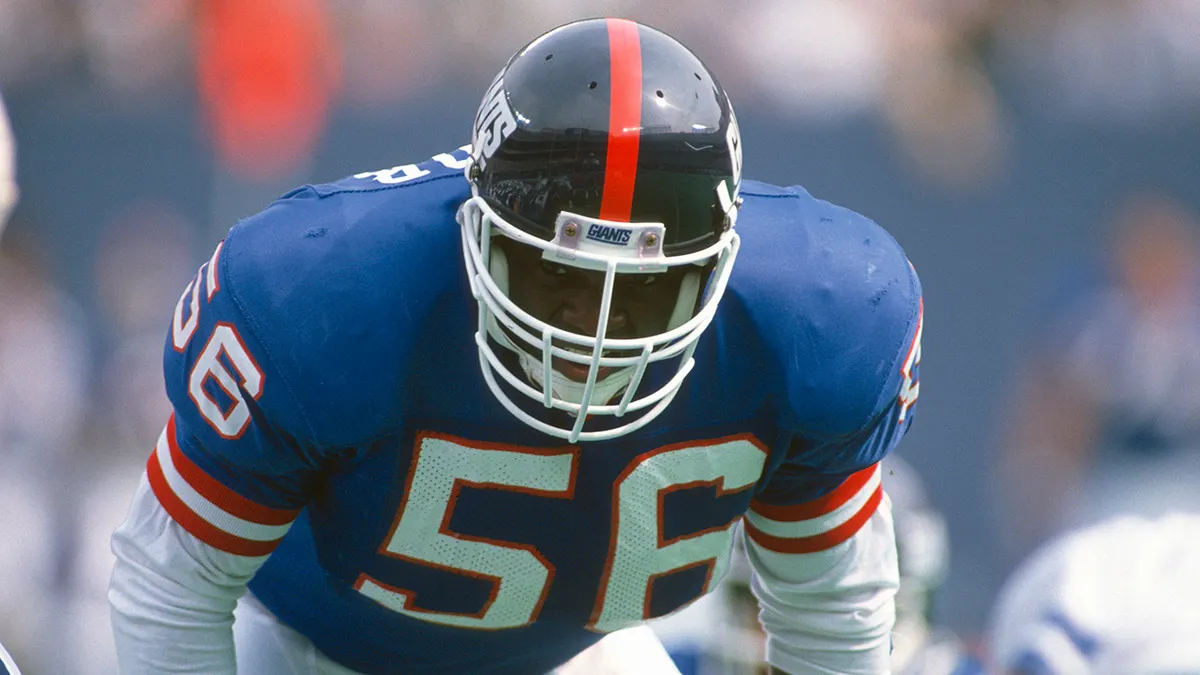
Taylor’s impact extended beyond the stat sheet. His ability to disrupt opposing offenses forced teams to change their entire game plans, often dedicating multiple blockers to contain him. Taylor’s relentless pursuit of quarterbacks and ball carriers made him a nightmare for offensive coordinators and earned him a place in the Pro Football Hall of Fame in 1999.
Beyond the accolades and statistics, Taylor’s legacy is his role in transforming the linebacker position. Before LT, linebackers were primarily run-stoppers. Taylor’s unique skill set allowed him to excel in pass rushing, coverage, and run defense, making him a versatile threat and changing how teams utilized linebackers in the NFL.
2. Reggie White
Known as the “Minister of Defense,” Reggie White is another iconic figure in NFL defensive history. White’s combination of size, strength, and agility made him one of the most dominant defensive ends to ever play the game. He began his professional career in the USFL before joining the Philadelphia Eagles in 1985.
White quickly made his mark in the NFL, recording 13 sacks in just 13 games during his rookie season. Over his 15-year career, he amassed an incredible 198 sacks, a record that stood until it was surpassed by Bruce Smith. White was named to 13 Pro Bowls and was a ten-time First-Team All-Pro selection.
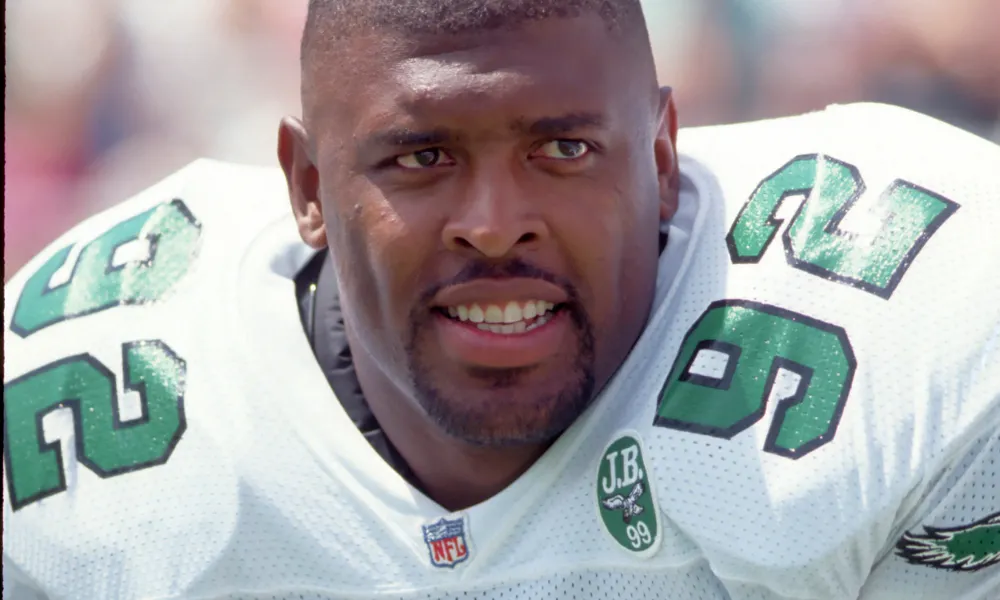
His impact was felt on multiple teams, as he played crucial roles for both the Philadelphia Eagles and the Green Bay Packers. White’s time with the Packers culminated in a Super Bowl victory in 1997, where he recorded three sacks in the game, solidifying his status as a clutch performer in big moments.
White’s legacy extends beyond his on-field prowess. He was known for his leadership and sportsmanship, often serving as a mentor to younger players. His nickname, “Minister of Defense,” came not only from his playing style but also from his work as an ordained minister, which showcased his character and influence off the field.
3. Dick Butkus
Dick Butkus is often remembered as the epitome of toughness and tenacity in the NFL. As a middle linebacker for the Chicago Bears from 1965 to 1973, Butkus set a standard for physical play and ferocity that few have matched. His intimidating presence and relentless pursuit of the ball carrier made him a legend in the annals of NFL history.
Butkus was an eight-time Pro Bowl selection and a six-time First-Team All-Pro. Despite playing only nine seasons, his impact on the game was profound. He recorded 22 interceptions and recovered 27 fumbles during his career, showcasing his ability to create turnovers and make game-changing plays.
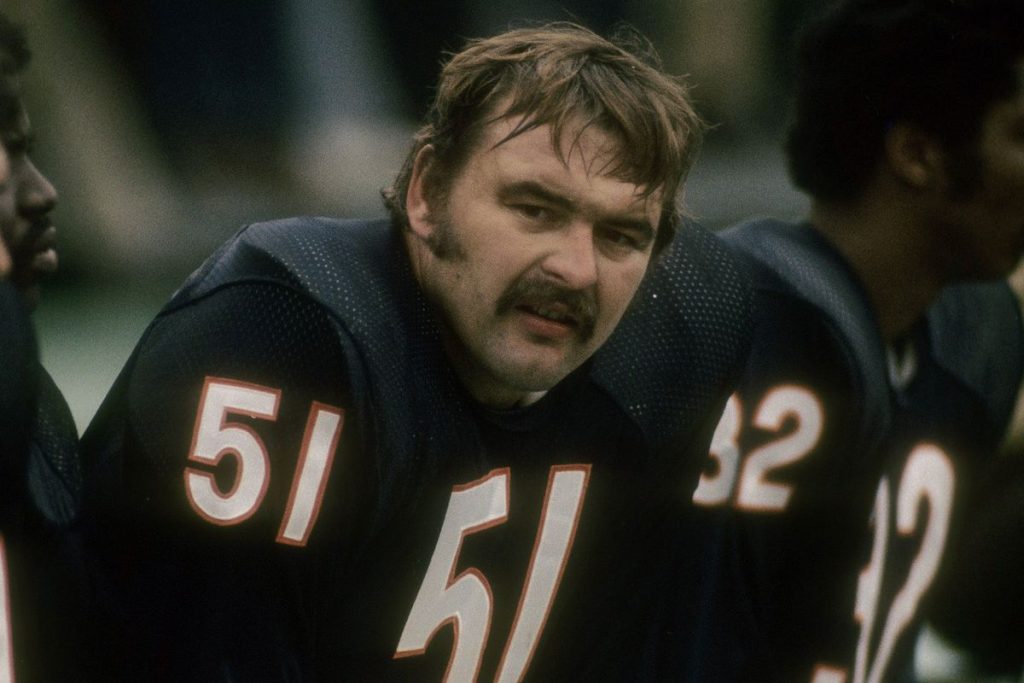
What set Butkus apart was not just his statistics but his style of play. He was known for his bone-crunching hits and his ability to diagnose plays quickly. Butkus had an uncanny knack for being around the ball, often making tackles sideline to sideline. His fierce competitiveness and leadership made him a cornerstone of the Bears’ defense during his tenure.
Butkus’s legacy is also marked by his post-football career, where he continued to be an ambassador for the game. He was inducted into the Pro Football Hall of Fame in 1979, and his name remains synonymous with linebacker excellence. The annual Butkus Award, given to the nation’s top linebacker at the high school, college, and professional levels, is a testament to his lasting impact on the sport.
4. Deion Sanders
Deion Sanders, also known as “Prime Time,” is one of the most electrifying and versatile players in NFL history. As a cornerback, Sanders was a lockdown defender who could neutralize the opposition’s best receiver. His speed, agility, and playmaking ability made him a standout from the moment he entered the league.
Sanders was drafted by the Atlanta Falcons with the fifth overall pick in the 1989 NFL Draft. Over his 14-year career, he played for several teams, including the San Francisco 49ers, Dallas Cowboys, Washington Redskins, and Baltimore Ravens. Sanders was an eight-time Pro Bowl selection and a six-time First-Team All-Pro.
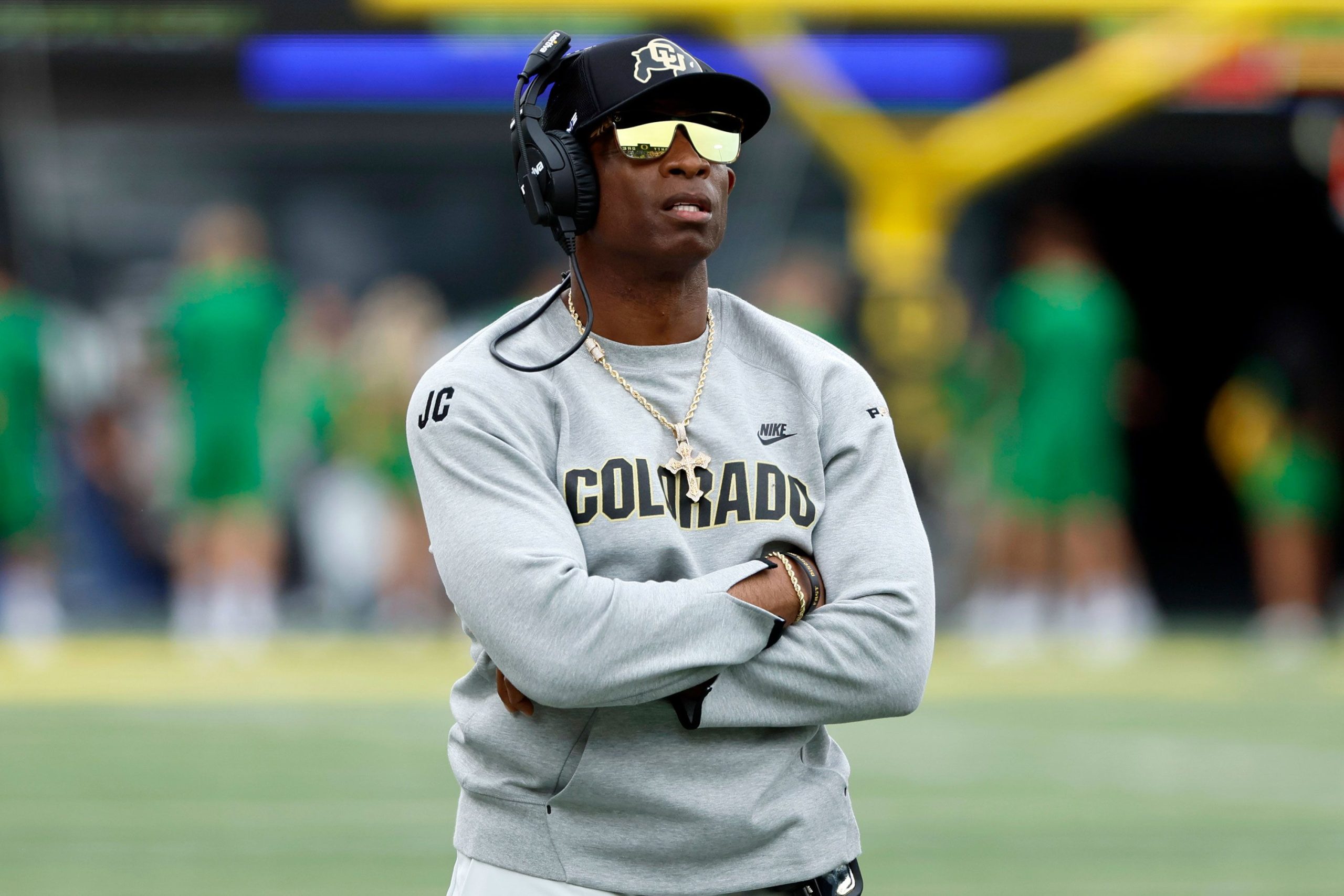
His ability to change the course of a game was unparalleled. Sanders recorded 53 interceptions in his career, returning nine for touchdowns. He was also a dynamic punt returner, adding another six touchdowns on special teams. His versatility extended to offense, where he occasionally played wide receiver, further showcasing his athleticism.
Sanders’s impact was most evident during his time with the San Francisco 49ers and Dallas Cowboys, where he helped both teams win Super Bowl titles. His performance in the 1994 season with the 49ers, where he recorded six interceptions and returned three for touchdowns, earned him the NFL Defensive Player of the Year award.
Beyond his on-field accomplishments, Sanders’s charisma and larger-than-life personality made him a cultural icon. He was inducted into the Pro Football Hall of Fame in 2011, cementing his legacy as one of the greatest defensive players in NFL history.
5. Ray Lewis
Ray Lewis is widely considered one of the best linebackers to ever play in the NFL. As the emotional leader of the Baltimore Ravens defense for 17 seasons, Lewis’s combination of intensity, intelligence, and athleticism made him a force to be reckoned with.
Drafted by the Ravens with the 26th overall pick in the 1996 NFL Draft, Lewis quickly established himself as a cornerstone of the franchise. He was a 13-time Pro Bowl selection and a seven-time First-Team All-Pro. Lewis’s career statistics are staggering: he recorded over 2,000 tackles, 41.5 sacks, and 31 interceptions.
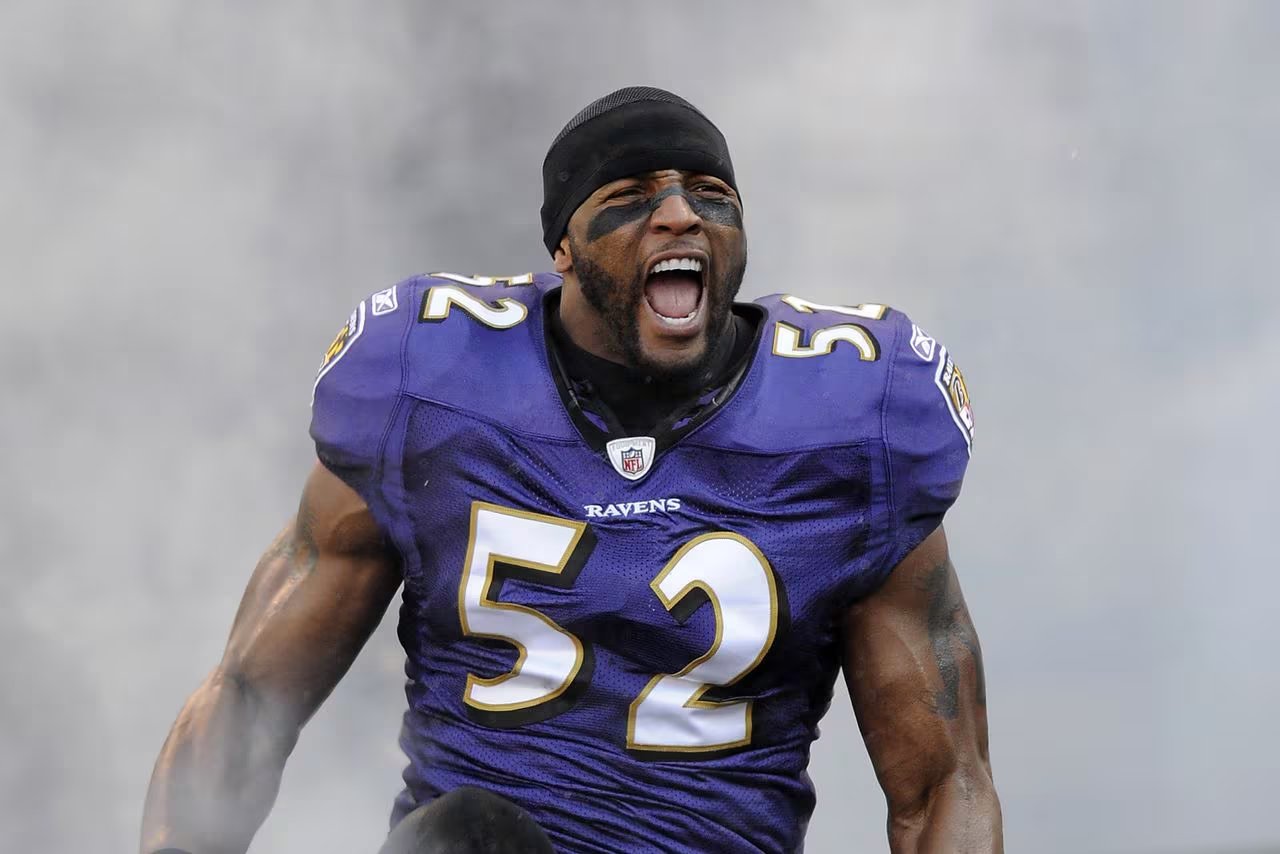
Lewis’s leadership and playmaking ability were key factors in the Ravens’ success, culminating in two Super Bowl victories (XXXV and XLVII). In Super Bowl XXXV, he was named the game’s MVP after leading a dominant defensive performance that stifled the New York Giants. His ability to rally his teammates and elevate their play was a hallmark of his career.
Off the field, Lewis’s legacy is marked by his inspirational speeches and community involvement. He was known for his pre-game dances and passionate speeches, which motivated not only his teammates but also fans and aspiring athletes. Lewis was inducted into the Pro Football Hall of Fame in 2018, a testament to his impact on and off the field.
6. Joe Greene
Joe Greene, famously known as “Mean Joe,” was the anchor of the Pittsburgh Steelers‘ “Steel Curtain” defense that dominated the NFL in the 1970s. As a defensive tackle, Greene’s combination of size, strength, and quickness made him virtually unblockable.
Drafted by the Steelers with the fourth overall pick in the 1969 NFL Draft, Greene immediately transformed the team’s defense. He was a ten-time Pro Bowl selection and a five-time First-Team All-Pro. Greene’s presence in the middle of the defensive line disrupted opposing offenses, allowing his teammates to make plays around him.
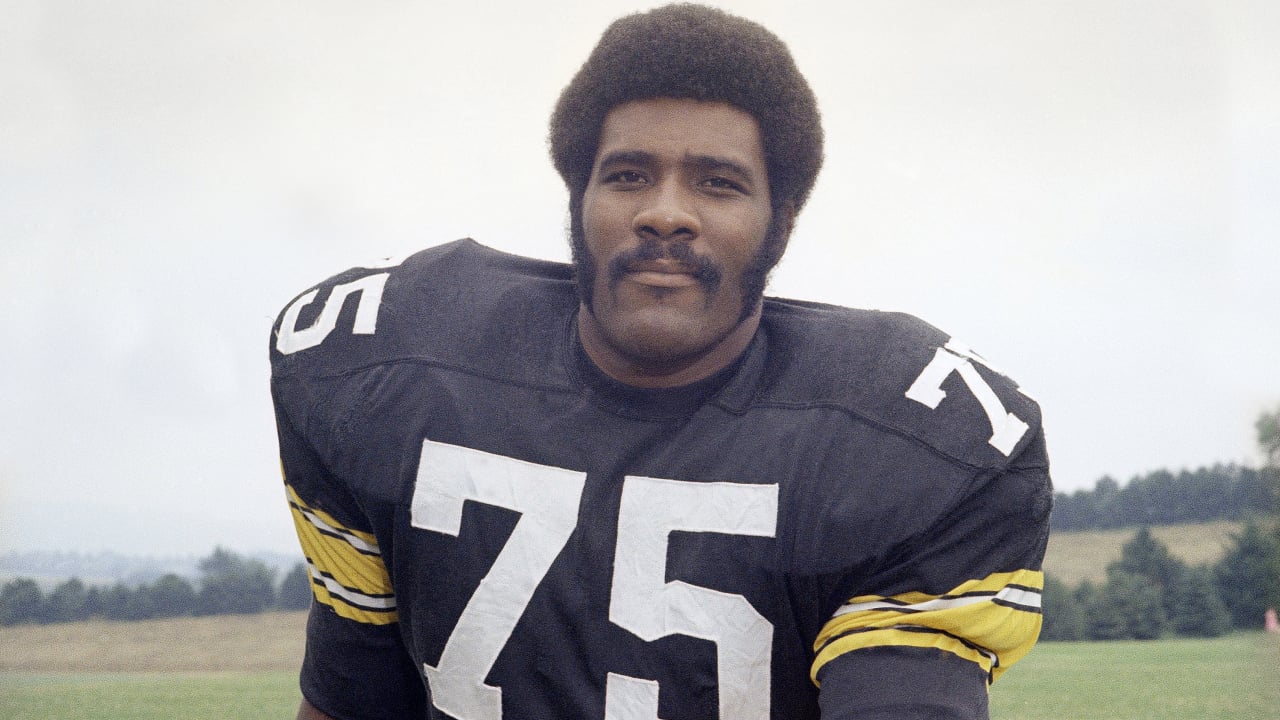
Greene’s impact was instrumental in the Steelers’ four Super Bowl victories during the 1970s. His ability to dominate the line of scrimmage and pressure quarterbacks was a key factor in the team’s success. Greene was named the NFL Defensive Player of the Year twice (1972 and 1974), further highlighting his dominance.
Off the field, Greene’s legacy is remembered not only for his playing career but also for his role in popular culture. He starred in one of the most famous commercials of all time, the “Hey Kid, Catch!” Coca-Cola ad, which endeared him to fans nationwide. Greene was inducted into the Pro Football Hall of Fame in 1987, solidifying his place as one of the greatest defensive players in NFL history.
7. Ronnie Lott
Ronnie Lott is widely regarded as one of the most versatile and hard-hitting defensive backs in NFL history. His ability to excel at both cornerback and safety made him a unique and invaluable asset to his teams. Lott’s physicality and ball-hawking skills were unmatched during his era.
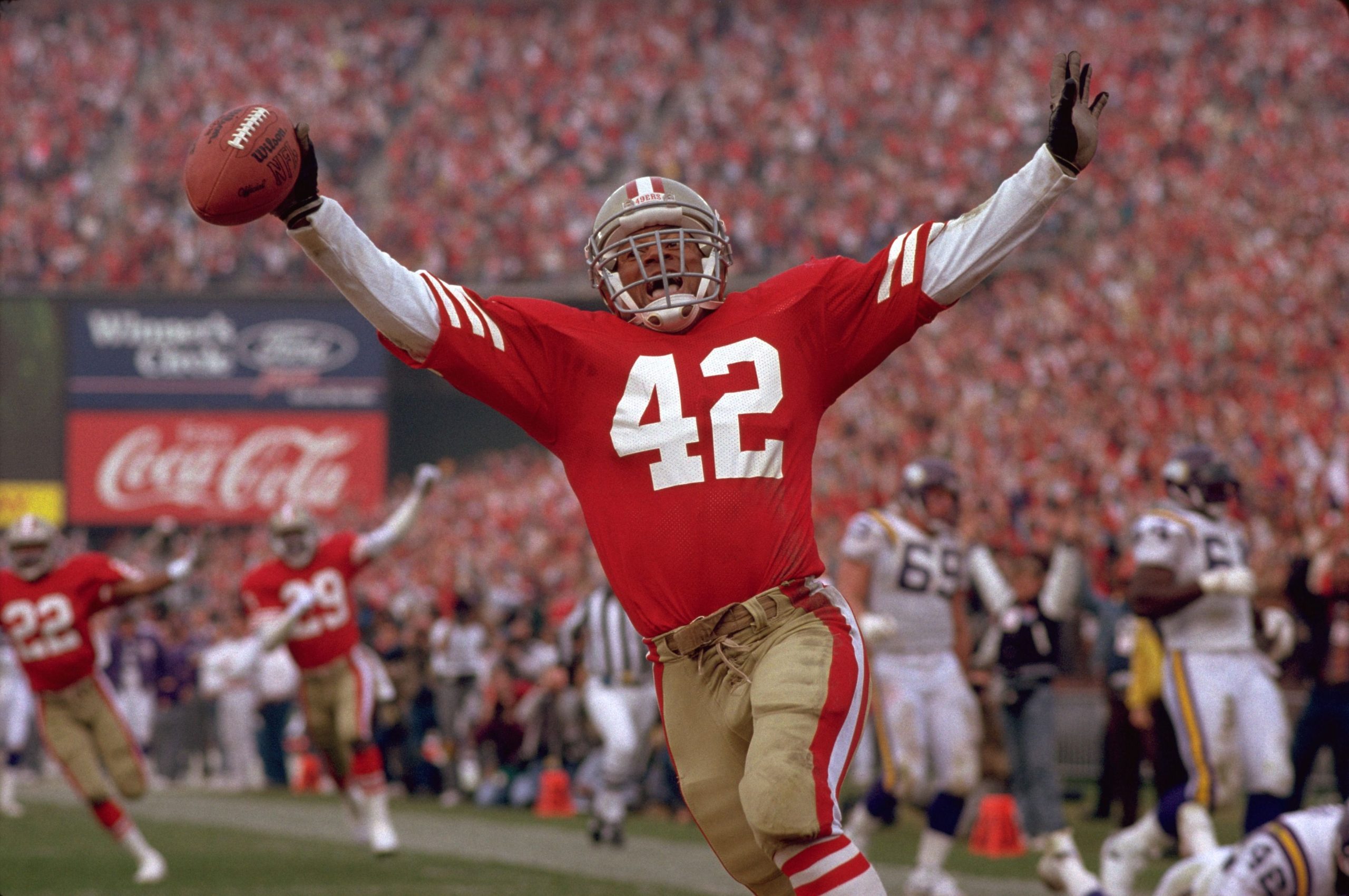
Drafted by the San Francisco 49ers with the eighth overall pick in the 1981 NFL Draft, Lott quickly made his presence felt. He was a ten-time Pro Bowl selection and an eight-time First-Team All-Pro. Over his 14-year career, Lott recorded 63 interceptions and was known for his fierce tackling ability.
Lott’s impact was most evident during the 49ers’ dynasty in the 1980s, where he played a crucial role in the team’s four Super Bowl victories. His ability to cover wide receivers and make plays in the run game made him a dual threat on defense. Lott’s toughness was legendary, exemplified by his decision to have the tip of his finger amputated rather than miss playing time due to an injury.
Beyond his on-field accomplishments, Lott’s leadership and work ethic set a standard for future generations. He was inducted into the Pro Football Hall of Fame in 2000, and his legacy as one of the greatest defensive players in NFL history remains firmly intact.
8. Rod Woodson
Rod Woodson’s combination of athleticism, intelligence, and versatility made him one of the greatest defensive backs in NFL history. Woodson’s ability to play both cornerback and safety at an elite level set him apart from his peers.
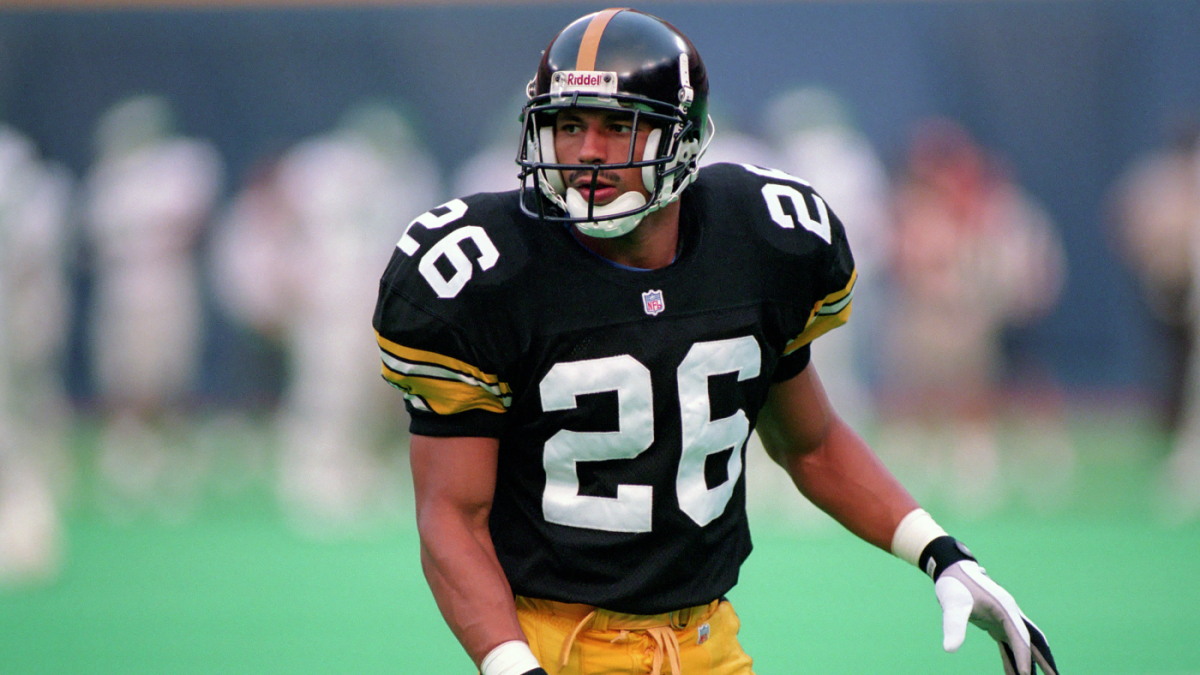
Drafted by the Pittsburgh Steelers with the tenth overall pick in the 1987 NFL Draft, Woodson quickly established himself as a premier defensive back. He was an eleven-time Pro Bowl selection and a six-time First-Team All-Pro. Over his 17-year career, Woodson recorded 71 interceptions, returning 12 for touchdowns, and scored an additional six touchdowns on special teams.
Woodson’s impact was felt on multiple teams, including the Steelers, San Francisco 49ers, Baltimore Ravens, and Oakland Raiders. His ability to create turnovers and score on defense made him a constant threat. Woodson’s career was highlighted by his role in the Ravens’ dominant defense that led to a Super Bowl victory in the 2000 season.
Off the field, Woodson’s legacy is marked by his coaching career and community involvement. He was inducted into the Pro Football Hall of Fame in 2009, a testament to his impact on the game and his status as one of the greatest defensive players in NFL history.
9. Bruce Smith
Bruce Smith is the NFL’s all-time leader in sacks, a testament to his dominance as a defensive end. Over his 19-year career, Smith’s combination of speed, power, and technique made him a nightmare for opposing quarterbacks.
Drafted by the Buffalo Bills with the first overall pick in the 1985 NFL Draft, Smith quickly established himself as a premier pass rusher. He was an eleven-time Pro Bowl selection and a nine-time First-Team All-Pro. Smith recorded an incredible 200 sacks, a record that still stands today.
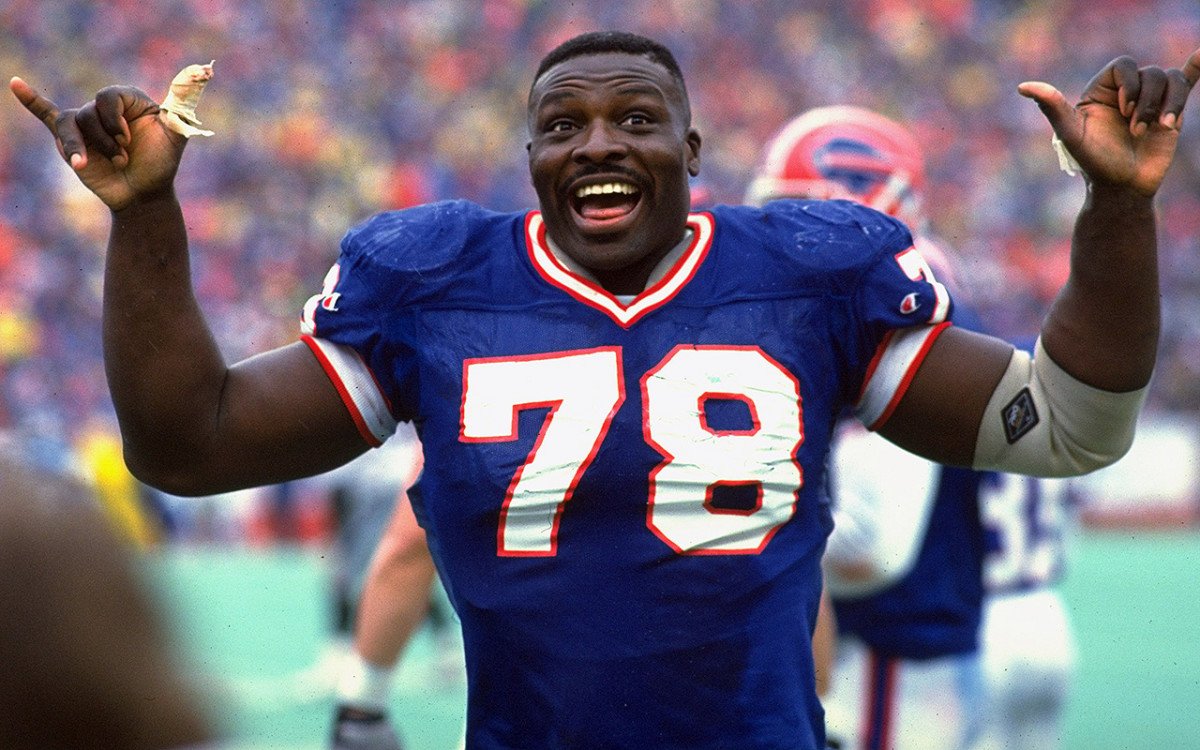
Smith’s impact was most evident during the Bills’ run to four consecutive Super Bowls in the early 1990s. His ability to pressure quarterbacks and disrupt offenses was a key factor in the team’s success. Smith’s career was also highlighted by his time with the Washington Redskins, where he continued to play at a high level.
Off the field, Smith’s legacy is marked by his leadership and mentoring of younger players. He was inducted into the Pro Football Hall of Fame in 2009, solidifying his status as one of the greatest defensive players in NFL history.
10. Mel Blount
Mel Blount’s combination of size, speed, and physicality made him one of the most dominant cornerbacks in NFL history. His ability to shut down opposing wide receivers and make game-changing plays was a hallmark of his career.
Drafted by the Pittsburgh Steelers in the third round of the 1970 NFL Draft, Blount quickly became a key component of the team’s legendary “Steel Curtain” defense. He was a five-time Pro Bowl selection and a two-time First-Team All-Pro. Over his 14-year career, Blount recorded 57 interceptions, returning two for touchdowns.
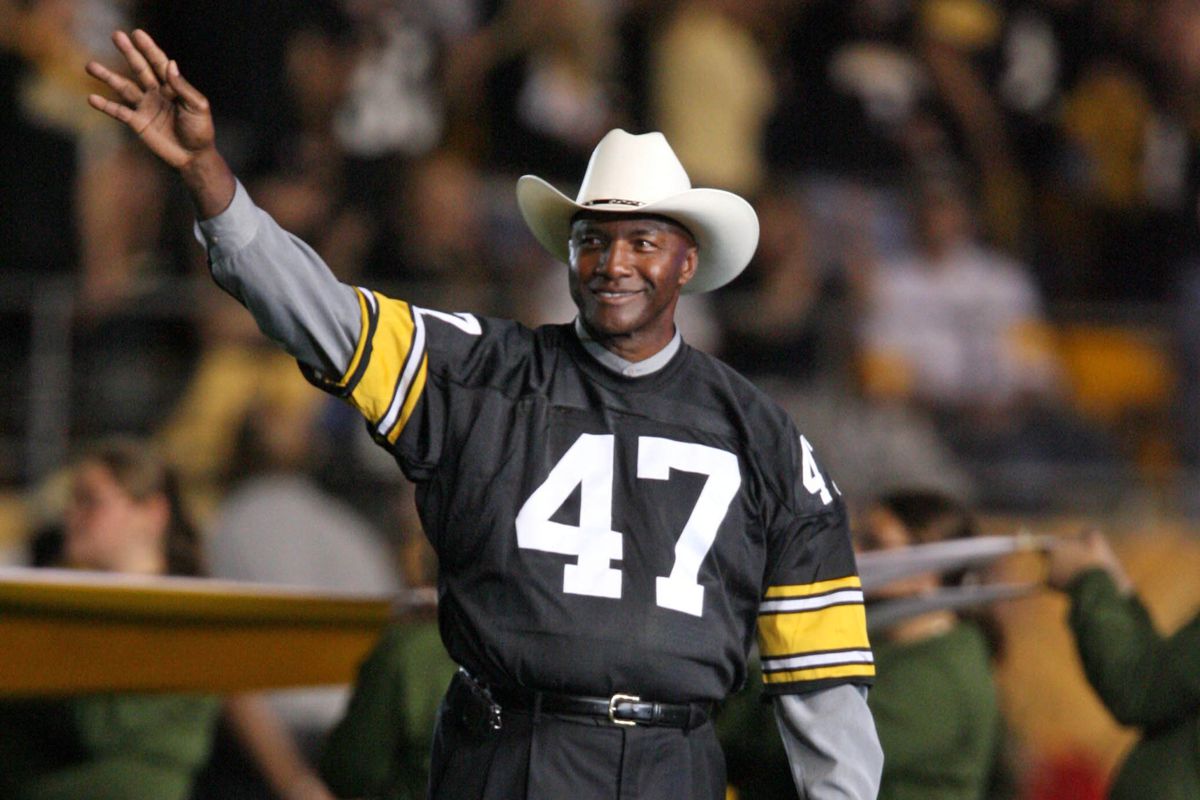
Blount’s impact was most evident during the Steelers’ four Super Bowl victories in the 1970s. His ability to play physical, press coverage disrupted opposing passing games and set the tone for the entire defense. Blount’s performance in the 1975 season, where he recorded 11 interceptions, earned him the NFL Defensive Player of the Year award.
Beyond his on-field accomplishments, Blount’s legacy is marked by his impact on the rules of the game. His physical style of play led to the NFL implementing the “Mel Blount Rule,” which limited contact between defensive backs and receivers beyond five yards. Blount was inducted into the Pro Football Hall of Fame in 1989, cementing his place as one of the greatest defensive players in NFL history.
The Evolution of Defensive Play in the NFL
The defensive strategies and techniques in the NFL have evolved significantly over the decades. Early football was dominated by a straightforward approach where physicality and sheer strength often decided the outcomes. However, as the game has progressed, defensive schemes have become more sophisticated, requiring players to adapt and excel in various roles and situations.
In the early days of the NFL, defenses primarily focused on stopping the run. Formations like the 5-2 defense, with five linemen and two linebackers, were common. Players like Joe Greene and Dick Butkus thrived in this era, utilizing their physical dominance to clog running lanes and pressure quarterbacks.
As the passing game became more prominent in the 1970s and 1980s, defensive strategies had to adjust. The emergence of the 4-3 defense, which utilizes four linemen and three linebackers, allowed for more flexibility in pass coverage and blitzing. Players like Lawrence Taylor redefined the linebacker position, bringing a new level of athleticism and versatility. Taylor’s ability to rush the passer and drop into coverage forced offenses to account for him on every play.
The 1980s and 1990s saw further innovations in defensive schemes. The introduction of zone blitzes, where defenders from different positions would blitz while others dropped into coverage, added complexity to defensive playbooks. Coaches like Dick LeBeau popularized these strategies, making it difficult for quarterbacks to predict the defense’s movements. Players like Reggie White and Bruce Smith thrived in these systems, utilizing their pass-rushing skills to disrupt offenses.
The modern NFL has seen a shift towards more versatile and hybrid defensive players. With offenses becoming more dynamic, featuring mobile quarterbacks and spread formations, defenses have had to adapt accordingly. Players like Deion Sanders and Rod Woodson exemplified the ability to cover multiple positions, playing both cornerback and safety at an elite level. This versatility allowed defenses to match up better against various offensive schemes.
Today’s NFL defenses often employ multiple formations and personnel groupings to counter the diverse offensive attacks. Nickel and dime packages, which utilize additional defensive backs, have become standard in passing situations. Linebackers and defensive ends are now expected to have the agility to cover receivers and the strength to rush the passer. This evolution has made the role of defensive players more challenging and critical to a team’s success.
Impact of Defensive Players on Team Success
Great defensive players are often the backbone of championship teams. Their ability to make game-changing plays, inspire their teammates, and set the tone for the defense can significantly impact a team’s success. Throughout NFL history, many Super Bowl champions have been anchored by dominant defensive players.
Lawrence Taylor’s impact on the New York Giants’ Super Bowl runs in the 1980s is a prime example. His relentless pass-rushing and playmaking ability were crucial in the Giants’ victories in Super Bowl XXI and XXV. Taylor’s presence forced opposing offenses to game plan specifically for him, often to no avail.
Similarly, the Pittsburgh Steelers dynasty in the 1970s was built on the strength of their “Steel Curtain” defense, led by Joe Greene and Mel Blount. Greene’s dominance in the trenches and Blount’s lockdown coverage were instrumental in the Steelers’ four Super Bowl victories. Their ability to shut down opposing offenses allowed the Steelers’ offense to control the game.
The Baltimore Ravens’ Super Bowl XXXV victory was largely due to their historically dominant defense, led by Ray Lewis. The Ravens’ defense allowed only 10.3 points per game during the regular season and shut down the New York Giants in the Super Bowl. Lewis’s leadership and playmaking were key factors in their success, earning him Super Bowl MVP honors.
Reggie White’s performance in Super Bowl XXXI was another example of a defensive player elevating his team to victory. White’s three sacks in the game helped the Green Bay Packers secure the championship. His ability to pressure the quarterback and disrupt the offense was a deciding factor in the outcome.
Great defensive players also have a lasting impact on their franchises beyond individual games. Their presence and leadership can set a standard of excellence that influences future generations. Players like Ronnie Lott and Rod Woodson were not only exceptional on the field but also served as mentors and role models for their teammates. Their work ethic and dedication to the game left a lasting legacy within their organizations.
Comparing Defensive Greats Across Eras
Comparing defensive players from different eras is a challenging but fascinating endeavor. The NFL has undergone significant changes in rules, playing styles, and athleticism over the decades, making it difficult to directly compare players from different times. However, certain qualities transcend eras, such as dominance, versatility, and impact on the game.
Lawrence Taylor and Dick Butkus, for instance, played in different eras but share similar qualities. Taylor’s dominance as a pass rusher in the 1980s and early
The 1990s redefined the linebacker position. His ability to change the course of a game with his speed and power was unparalleled. Butkus, on the other hand, played in the 1960s and 1970s, when the game was more physical and run-oriented. His ferocious tackling and instinctive play set the standard for middle linebackers of his time.
Reggie White and Bruce Smith are two of the greatest defensive ends in NFL history, but their careers also spanned different eras. White’s career began in the mid-1980s and continued into the late 1990s. His combination of strength and agility made him a dominant force against both the run and the pass. Smith, whose career started in the mid-1980s and extended into the early 2000s, is the all-time sack leader, showcasing his longevity and consistency as a pass rusher.
Deion Sanders and Mel Blount were both elite cornerbacks, but they played in different defensive schemes and eras. Sanders, known for his flashy style and playmaking ability, excelled in man-to-man coverage and was a threat to score whenever he touched the ball. Blount, playing in the 1970s, was known for his physical style of play and ability to shut down receivers with his press coverage. His dominance led to rule changes to limit contact between defensive backs and receivers.
Ronnie Lott and Rod Woodson are two of the most versatile defensive backs in NFL history. Lott’s ability to play both cornerback and safety at a high level made him invaluable to the 49ers’ defense in the 1980s. His physicality and leadership were crucial to the team’s success. Woodson, who also played both positions, was known for his athleticism and playmaking ability. His ability to score on defense and special teams made him a unique threat.
Comparing these players highlights the evolution of defensive play in the NFL. Each player brought unique skills and attributes that made them dominant in their respective eras. Despite the differences in playing styles and rules, the qualities that made these players great—dominance, versatility, and impact—remain constant across all eras.
The Legacy of the Greatest Defensive Players
The legacy of the greatest defensive players in NFL history extends beyond their accomplishments. These players have influenced the game, inspired future generations, and left an indelible mark on the sport. Their contributions continue to be felt long after their playing days are over.
Lawrence Taylor’s impact on the linebacker position is perhaps the most significant. His ability to rush the passer and disrupt offenses changed how teams utilized linebackers. Taylor’s influence can be seen in today’s game, where linebackers are expected to be versatile playmakers who can impact the game in multiple ways.
Reggie White’s legacy as a dominant defensive end and a leader continues to inspire players and fans. His combination of physical gifts and work ethic set a standard for future generations. White’s influence is evident in the way modern defensive ends approach the game, with an emphasis on both pass rushing and run stopping.
Dick Butkus’s reputation as one of the toughest and most tenacious players in NFL history endures to this day. His style of play and fierce competitiveness are qualities that aspiring linebackers strive to emulate. The Butkus Award, given annually to the top linebacker at various levels, ensures that his legacy lives on.
Deion Sanders’s impact on the cornerback position and his larger-than-life personality have made him a cultural icon. His ability to shut down receivers and make electrifying plays on special teams has inspired countless young players. Sanders’s charisma and success on and off the field have cemented his place as one of the most influential players in NFL history.
Ray Lewis’s leadership and inspirational presence have left a lasting mark on the Baltimore Ravens and the NFL as a whole. His speeches and pre-game rituals are legendary, and his ability to elevate his teammates is a testament to his impact. Lewis’s legacy is one of passion, dedication, and excellence.
Joe Greene’s role in the “Steel Curtain” defense and his contributions to the Steelers’ dynasty have made him a beloved figure in Pittsburgh and beyond. His dominance on the defensive line and his leadership qualities have inspired generations of defensive linemen. Greene’s influence extends beyond his playing career, as he has continued to be involved in the game and his community.
Ronnie Lott’s versatility and toughness have set a benchmark for defensive backs. His willingness to play through pain and his ability to excel at multiple positions have made him a role model for defensive players. Lott’s legacy is one of excellence and resilience.
Rod Woodson’s athleticism and playmaking ability have made him one of the most respected defensive players in NFL history. His ability to impact the game in various ways, from interceptions to punt returns, has set a standard for future generations. Woodson’s influence is evident in the way modern defensive backs approach the game.
Bruce Smith’s status as the all-time sack leader and his consistent dominance over nearly two decades has made him a legendary figure. His work ethic and dedication to his craft have inspired countless pass rushers. Smith’s legacy is one of longevity and excellence.
Mel Blount’s impact on the rules of the game and his dominance as a cornerback has left an indelible mark on the NFL. His physical style of play and ability to shut down receivers have set a standard for cornerbacks. Blount’s influence can be seen in the way modern defenses approach pass coverage.
Conclusion
The top 10 NFL defensive players of all time represent the pinnacle of excellence on the defensive side of the ball. Their contributions have not only led to individual accolades but have also been instrumental in their teams’ success. From Lawrence Taylor’s game-changing impact to Mel Blount’s rule-changing dominance, these players have left a lasting legacy on the sport of football.
The evolution of defensive play, the impact of great defensive players on team success, and the comparison of players across eras highlight the significance of defense in the NFL. These players have set standards of excellence, inspired future generations, and left an indelible mark on the game. Their legacies continue to influence the way football is played and appreciated.
As we celebrate the achievements of these defensive legends, we recognize their unparalleled contributions to the game of football. Their stories remind us of the importance of defense in the pursuit of championships and the enduring impact of greatness on the field.


